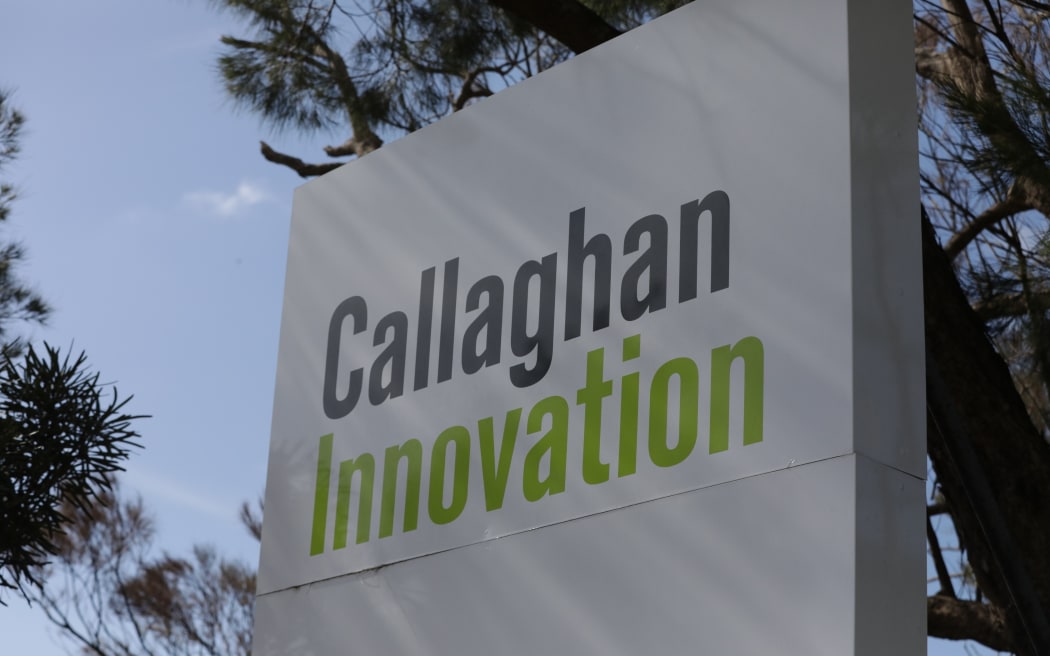
Photo: RNZ / Rebekah Parsons-King
Callaghan Innovation is tens of millions of dollars short of money for urgent building work - some of which is needed to keep staff safe in outdated laboratories.
A confidential document leaked to RNZ reveals hazardous goods storage is not up scratch in some laboratories.
It also warns that if no action is taken, there was "significant potential" for health and safety risks at the site to increase substantially.
The document says the organisation - one of New Zealand's top research institutes - must spend about $120 million over the next five years.
It says $62m needs to be spent immediately, but ideally more than $1.4 billion is needed to bring its facilities up to world-class.
RNZ understands some Callaghan Innovation staff are dubious about the claims, and believe the problems are being exaggerated to justify staff cuts.
The document was provided to RNZ just days before consultation closes on Friday on a re-set of the organisation's priorities, which is expected to result in job cuts.
Callaghan Innovation took over the laboratories and buildings of the Crown research institute Industrial Research Ltd at Gracefield on the eastern edge of Petone and Lower Hutt when it was created in 2013.
A government agency, it helps companies with research problems and with commercialising new technologies.
It was among the Wellington-region science organisations that would have benefited from the previous government's now-cancelled plan to spend $450m on research infrastructure in a project dubbed "Wellington Science City".
The document provided to RNZ said the organisation spent $110m over the past five years building new laboratories, removing asbestos and fixing roofs, pipes and cables.
But it said the facilities continued to age and many were "now beyond end-of-life".
"However, 69 percent of buildings (by floor area) are still over 40 years old, and 19 percent of laboratories are in 'poor' or 'very poor' condition," the paper said.
"Starting now and over the next 5 years, around $73m of further capital investment will be required to prevent buildings progressively falling into disrepair and facilities becoming unusable. $62m is required immediately if we want to ensure people are not working in end of life buildings, assessed as poor quality work environments with H&S concerns. After allowing for contingency and cost escalation, the required investment rises to approximately $120m.
"This is still likely to be an underestimate, and it is also difficult to predict precisely when investments will be required. Recent examples of this include the sudden boiler failure in the Processing Building and the identification of seismic improvements for the Robertson Building."
The document said the site had a further 12 boilers and while four were minor in size and cost, eight were beyond their life expectancy and could fail at any point.
"We would be unlikely to cover the cost if one did fail," it said.
The document said Callaghan depreciated about $2m a year for its older assets and that was "well short" of the $120m it needed.
"In short, Callaghan Innovation's cash position and depreciation funding is substantially below the levels required to maintain the organisation's infrastructure and asset base at its current scale," it said.
lt said seismic assessments of 14 buildings were due this year and if some of the larger buildings required "an immediate decant" the organisation did not have enough space to relocate them on site.
The document said the Gracefield site "is thought to currently hold some tens of thousands of items of hazardous goods" and while inventories for bulk storage were "largely up to date and fairly accurate", it did not have accurate records for other areas.
"The bulk storage facilities are all certified annually, but a significant number of labs have hazardous good storage below certification thresholds," the document said.
It said the state of the facilities was "substantially increasing" health and safety risks, and the situation would get worse if they were not improved.
The document said Callaghan spent about $15m a year managing its facilities but needed to spend about $2-3m more in order to avoid growing its list of deferred maintenance.
Public Service Association national secretary Duane Leo said the union's members were worried about the state of the Gracefield facilities.
"Our members are concerned about the fitness of the facilities at Callaghan Innovation to allow them to carry out their valuable work in safe conditions. The Science City proposal was a way forward. But its axing by the government has robbed the science community of this opportunity and this has happened in the absence of a science strategy from the government," he said.
"The PSA is seeking an urgent meeting with Minister Collins to raise our concerns. This includes Callaghan Innovation's proposed strategic reset to focus only on research that generates commercial revenue and the threat that poses to public good research and the positions of many scientists and researchers."
Callaghan Innovation employs 382 people full-time. Most of its $116m income last year came from the government but $17.8m was from commercial revenue.



